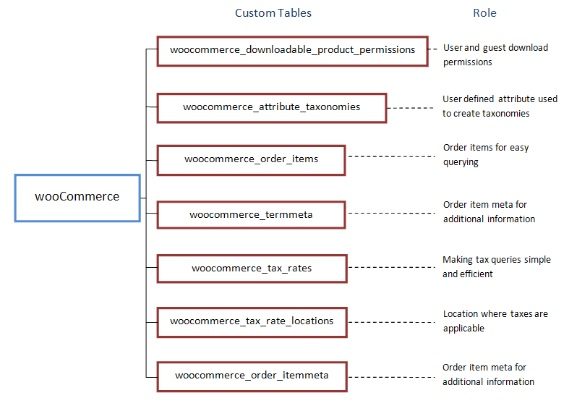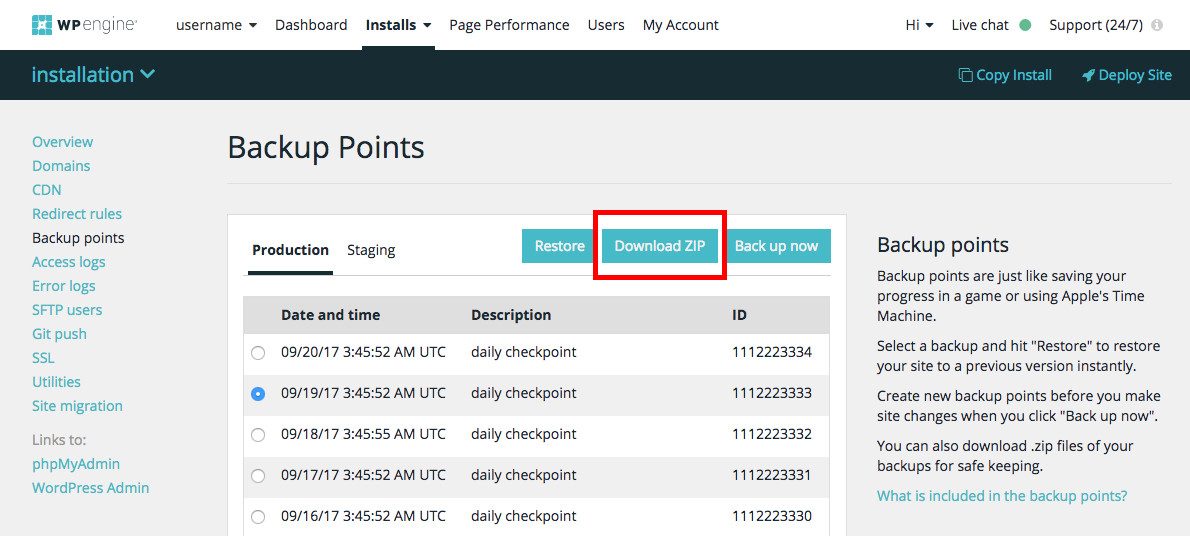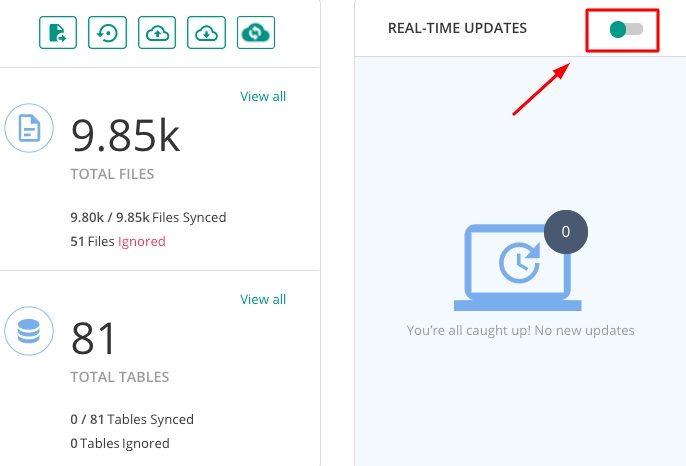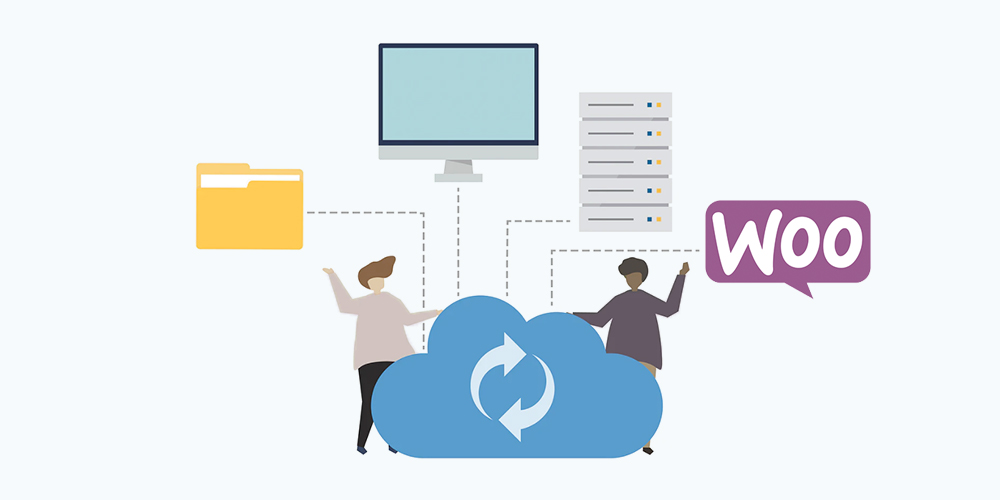En junio de 1995, había menos de 25.000 sitios Web en total. Avance rápido hasta 2019 y ese número se ha multiplicado por 12,681 veces. En este momento hay casi 2 MIL MILLONES de sitios web. Los sitios web se han convertido en una forma crucial de representación y un medio para mostrar las habilidades de uno.
Ahora imagínese si su portal web fallara de repente. Puede perder todos los datos de su portal web y, si tiene una tienda en línea, inclusive pierde la información del client. Esto no solo tendrá repercusiones financieras, sino que además tendrá un costo mental. Una solución atemporal para ello es mantener su sitio respaldado e poner en práctica medidas de seguridad. Es concretamente importante para los sitios de WooCommerce.
Why backup a WooCommerce site
Aside from the fact that you should already be taking full site backups as part of your site security, there are a couple of WooCommerce-specific reasons.
WooCommerce updates
The WooCommerce team regularly releases updates with security patches and new features. For example, WooCommerce 3.5 has improved transaction email copying and a new feature to export products to a CSV file. The team itself recommends always having a backup of your entire site before updating.
When upgrading, you may face incompatibilities between extensions and plugins and even custom code problems. A backup ensures that you can always roll back to the latest version. You can also take certain recommended precautions before updating.
There is more at stake
Downtime, even for a normal web portal, can mean a loss of hundreds of dollars. What would be the case with your WooCommerce site then? Without backup, the consequences of falling can be dire.
All the negatives are amplified - not only do you risk losing data, you could lose sensitive customer data. Every minute, you could lose orders, payments, and most importantly, customer trust. He ends up losing customers and money, factors that determine his entire business model. Backing up your WooCommerce is the least you can do to make sure your business stays up and running.
What Kind of Backup Solution Does WooCommerce Need?
The first thing to understand is that a WooCommerce site cannot always be backed up like a normal site. You see, all websites contain Records and Database. A normal database would consist of 11 tables. Regardless, once you install the WooCommerce plugin, you add an additional custom table. Contains critical information about orders, tax rates, shipping details, and transactions.

Many backup solutions are not designed to detect this additional table. It is feasible that they will backup their files and database, but they will surely lose the data in WooCommerce custom table. Ultimately, you end up with an incomplete backup that isn't of much use to your store.
Thus you require a custom backup solution for WooCommerce.
Second, a WooCommerce site has constant activity on the site. At any time, it is feasible for visitors to make payments, browse products, enter details, etc. If you have hourly scheduled backups, in the event of a failure, you can lose up to an hour of customer order data. So if someone placed an order in the last hour, they would have no idea. You could lose your personal information, shipping address, and worse still, your payment information.
A WooCommerce site requires a real-time backup solution that records and backs up the data when any changes occur.
How do you backup a WooCommerce site?
Hay tres formas de hacer una copia de seguridad de WordPress (que cubrimos en detalle antes). De este modo, no debería sorprendernos que estos además se apliquen a las tiendas WooCommerce.
1. Manual backups
The manual method of backing up is not too complex, but it can be risky. Even the smallest mistake could have drastic repercussions. It is also a time-consuming task. It generally involves the following steps:
- Download the files from your WordPress web portal to your local system (your computer or laptop). You can do this by means of
- Next, you need to make a backup of your database. Using your host's database management panel, access phpMyAdmin.
- Select the database from the wp-config.php file. The database tables will be displayed on the screen.
- Select all the tables and click Export.
This procedure is not ideal to run on a regular basis, much less in real time. Even if you assign a person to it, it is basically not possible. And definitely not the right choice for backing up a WooCommerce site.
2. Copias de seguridad por medio de de su server Web

Most WordPress hosting providers offer backups included in their plan or as an additional paid feature. Despite everything, they usually offer daily backups. It would be stupendously difficult to find a host that provides real-time backups. But if it is absolutely necessary to make a backup through your hosts, here we explain how to do it.
- Contact your hosting provider and download the latest backup. If you have the option to perform on-demand backups, start a new backup and then download it.
- Exporte y haga una copia de seguridad de su base de datos por medio de el método manual. Alternativamente, puede exportar la base de datos a su carpeta local utilizando el administrador de MySQL.
Host backups are generally known to be notoriously unreliable. If it is used to restore, you could lose important data. At the same time, they don't backup your WooCommerce custom table, so you will also lose the data stored there.
We have already highlighted the need for real-time backup when it comes to WooCommerce sites. Having explored these two methods, it is clear that neither of them is a good fit.
3. Backups with the WordPress plugin
Using an automatic backup plugin is the easiest way to back up WordPress sites. It is convenient and faster to set up and use. Many plugins like BlogVault, UpdraftPlus and BackupBuddy have simplified the backup procedure and made it easy to run and manage.
When it comes to WooCommerce, even though there are several options available, not all backup plugins are designed for stores. As discussed, you will need to select a plugin that backs up your WooCommerce data as well as all other web portal data. At the same time, you should select one whose backups are reliable and will work efficiently when restored. Additionally, you should be able to test site backups before restoring. One solution that meets this criteria and does more is BlogVault. Let's see why.
Why manage backups with BlogVault?
BlogVaults real-time backups use a procedure where even the slightest changes to site activity immediately trigger a backup. This includes changes made to WooCommerce custom table.
Heavy backup processes can overload your server and slow down your web portal. A WooCommerce Backup Plugin delete this risk in two ways:
- All your backup procedure takes place on your dedicated servers. This actually frees up server resources for your use.
- They use an incremental backup module where, after installation, the plugin first backs up the entire site. Subsequent changes are basically added to this initial backup, in small chunks. This ensures that your server and web portal are not affected and are working optimally.
How to Backup Your WooCommerce Site with BlogVault
- Sign up and create an account with BlogVault. Add your site to the panel that appears.
- Although you can manually install and activate the plugin, BlogVaults offers an easy and automated option from the control panel to do so. Upon activation, the plugin performs a full initial backup of the site.
- Then go to the "Backups" section on your dashboard. Click the toggle bar next to "Real-time updates" to activate this feature.

Learn more about BlogVault →
And there you go! You have successfully activated real-time backups for your site. In the future, any changes to your site will immediately trigger a backup.
Although most solutions like BlogVault They are a plug and drop model, it is always best to take every possible precaution to ensure that your site does not lose any data. When it comes to website security and support, your attitude towards precautionary measures should be "if it exists, I will."
Tips to ensure zero data loss
- Always use a test site to test your backups before restoring. You can use an essay plugin like WP staging or Duplicator to do this (if you're using BlogVault, they have a built-in staging feature).
- In case you are concerned about losing data from orders placed while restoring a backup, you can use a maintenance mode plugin. In this way, you can temporarily prevent your site from accepting new orders. You can activate this function and then restore the latest backup.
- Encuentre el momento del día en que su sitio recibe la menor cantidad de traffic / pedidos por medio de de Google analytics. Si requiere restaurar una copia de seguridad, intente hacerlo dentro de ese período de tiempo. Si usa copias de seguridad periódicas, prográmelas durante ese período de tiempo.
- Make sure you have multiple copies of your backups and that they are accessible and downloadable. And preferably, keep a copy off-site.
- If you are using a backup plugin, be sure to use one that provides good customer support. In case of any problem, you must enter the assistance of your team.
Ensuring your WooCommerce site is backed up should be part of the basic management of your web portal. Data loss has a much greater impact on an online store than on a normal web portal.
This can be attributed to the fact that:
- WooCommerce sites have more functionality and various processes running at any given time.
- The WooCommerce site owner has an obligation to keep their customers' information safe. Any loss or misuse of customer personal information may have legal repercussions.
- An online store has to deal with quite a few suppliers for the purchase, delivery and payment of products. The magnitude of the data at stake is significantly greater.
- A WooCommerce store is a significantly higher investment than a regular blog site basically due to the many processes set up.
Para configurar una strategy de respaldo eficiente para su tienda WooCommerce, sugerimos utilizar un complemento de respaldo de WordPress en tiempo real que respalde toda la actividad del sitio, incluidos los cambios realizados en la tabla personalizada de WooCommerce. El procedimiento automatizado es una forma fácil pero completa de monitorear el rendimiento del sitio y minimizar el tiempo de inactividad. Esto es lo más cerca que puede llegar a la pérdida cero de datos.
Esperamos que este post le ayude a hacer una copia de seguridad de su tienda WooCommerce de manera eficiente. Si dispones de alguna sugerencia o pregunta, ¡deja un comentario! ¡Feliz respaldo!






